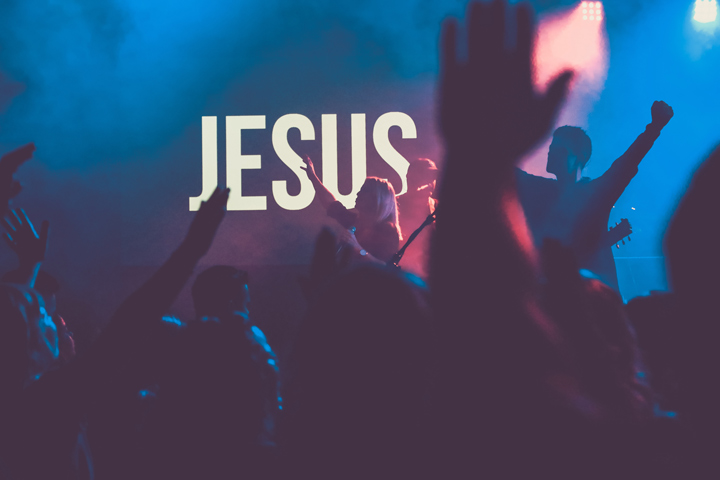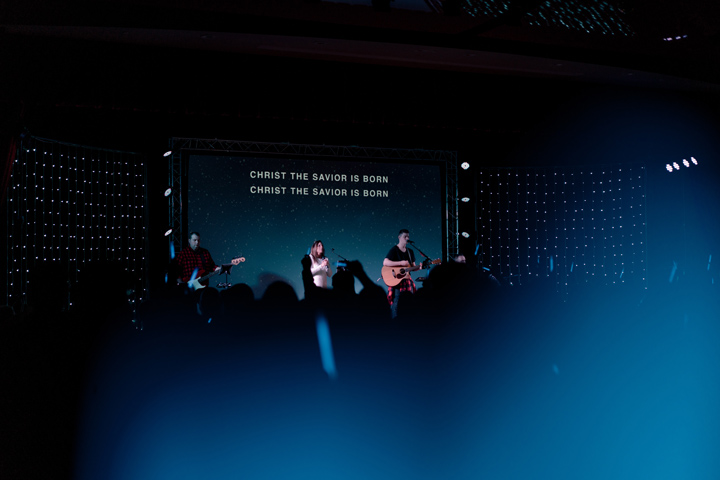“In my head and my heart, all that serving and good intention was going to God, but from an outsider’s perspective it might just look like it’s going to the business of saving souls.”
Late last year, New York Magazine ran a story in its site The Cut about Rockstar Pastor Carl Lentz’s fall from grace. After admitting to unfaithfulness, he was asked to step down from his prominent position at the New York City headquarters of Australian megachurch Hillsong.
The scandal involving the young minister, most famous outside of evangelical circles as the guy who helped Justin Bieber through a detox phase in 2017, highlights a recent spate of issues coming out of megachurches and other large-scale international ministries. (See Zacharias, Ravi.)

There seems to be a growing concern for what happens in megachurches like Hillsong—which, by the way, The New York Times described as a “brand”—from those outside of it. And there is just cause for the curiosity, given a megachurch’s power, influence, resources, and these shady goings-on.
Dominant denominations
But first, a definition. According to the Connecticut-based Hartford Institute for Religion Research, which has been around since 1974, a “megachurch” is one that has an average weekly attendance of more than 2,000, and falls under Protestant or Evangelical beliefs. As defined and conceptualized, it has existed for decades, since around the 1950s.
The Hartford Institute maintains a database of almost 2,000 of these huge churches scattered around the United States, whose membership numbers are quite substantial to say the least. To illustrate this and their influence, a Pew Research Center analysis of the 2016 US Presidential Elections shows that the white born again/evangelical vote significantly helped Donald Trump win against Hillary Clinton.
In Asia, megachurches are not as many in terms of organizational count, but attendance can be just as staggering. South Korea’s Yoido Full Gospel Church—who most recently came under fire in the news for peddling pocket cards that supposedly protected people from COVID—lists 480,000 registered members and is considered the biggest megachurch on Earth. It began in 1973 and has a weekly average attendance of 200,000 in Seoul alone.
There are also megachurches identified in India, and our regional neighbors Hong Kong, Indonesia, and Singapore.
Downtown church
The church I used to go to, which I won’t name here, is Pentecostal, and certainly qualifies for the definition as laid out by the Hartford Institute. At one point, it had a weekly attendance of around 30,000 people spread across different campuses and branches.
My mother attended the church as a little girl, as it has been around since the 1950s and was referred to as the downtown church in Manila. As such, my connection to both the place and the people there is deeply personal and spans generations. The kids I went to Sunday School and performed in Christmas musicals with now have children of their own to bring to services and theater rehearsals.
Having attended week in-week out for a majority of my life, I’ve seen many chapters in the church’s narrative arc through the decades.
I have vivid memories of the old, dusty auditorium, with its woeful blue carpet, uncomfortable wooden pews, and rickety chairs. I have also been part of several ministries under it, and a was both a youth and choir leader.

Relentless growth
One thing that megachurches seem to have in common is the relentless drive for growth. The need to spread the good word and, more importantly it seemed sometimes, to have them join the church is ingrained in everyone early on.
There is no shortage of evangelization efforts and the goal is ever present on the minds of those who are active in the ministry. After each pop-up campus concert or prison outreach, the number of people evangelized is announced promptly in the next service. There are also constant comparisons of “souls saved” versus that of last year, not unlike an MLM sales pep rally around a quota deadline.
Once you become a regular attendee, you are encouraged to join a ministry, but aggressively so. It is not a requirement in the strictest sense of the word, but it is always a topic of pointed discussion. The battle cry is always “to serve God,” as translated to offering your time, skills, and resources outside of the two-hour weekly worship service.
Going through the phases as I grew up—children’s church then teens service then youth church then young professionals’ ministry—just seemed like what was expected of me. I wanted to be a good Christian so I got involved and served, simple as that.
In my head and my heart, all that serving and good intention was going to God, but from an outsider’s perspective it might just look like it’s going to the business of saving souls.
Giving and receiving
That word, business, has been connected to megachurches for some time, to obviously disagreeable effect.
Many have questioned the torrential monetary amounts that go through a megachurch, and the kind of salaries their senior preachers have. People like Ben Kirby, who started an Instagram account pointing at the expensive sneaker tastes of some preachers, have tried to examine this immense wealth.
The Philippines is no stranger to questions like these as we have our own supposedly superstar preachers who fly in private jets and have the ear of powerful men.
At my former church, preaching about money, like evangelization, is also a constant. When I was in college, the church decided to rebuild the structures within its compound, a construction project that amounted to hundreds and millions of pesos. Of course, the congregation was all too willing to give, and the fundraiser lasted for years.
But it seemed to me that the fundraising never stopped, and a new goal, a new reason for taking up a special offering always seemed to pop up. Alongside these giving efforts are guest preachers who would be flown in to bolster the people, and with them come an inspiring word and sometimes a gimmick.
The gimmicks, which can come in the form of anything from a special box to place your offerings in or a checklist card you to track your giving, made me feel the most uneasy. These felt like Christian marketing and I didn’t feel too good about imagining my beliefs as a business scheme. I distinctly remember sitting in church one day, looking at one of these guest preachers, and thinking “why does he sound like a used car salesman trying to sell me a lemon?”
Message and messenger
I left my former church fully last year for many other reasons apart from the worrying points I brought up. The fact that I am an out and proud gay man is not the least of said reasons. (Raise your hand if you’ve been through some sort of conversion therapy.)
Let me be clear, though: there were many happy memories. I made life-long friends, and the formation of my personal moral code was rooted in the teachings that I received over the years. I also do not dismiss the pure intentions of many of my former church’s members, workers, and pastors. To me, a good person is a good person is a good person as much as love is love is love.

I also do not discount the good that faith and organized religion can bring to a person. It can give someone hope and something to hold on to in a world where there is too much that cannot be explained. It is for these reasons that I still believe in Him.
Not all megachurches, like personal experiences, are the same, of course. I haven’t attended every single megachurch out there, and even if I did, not all perspectives and journey would be the same.
That uniqueness of experience is what I hold higher. One other thing that we are taught early on is that your relationship with God is personal. No one should get in the way of that sacred bond. But a connection so intimate can be drowned out by the noise of an ever-churning megachurch.
As another Easter spent in lockdown comes to a close, I continue to choose quietness.
Banner Photo by Edwin Andrade on Unsplash





